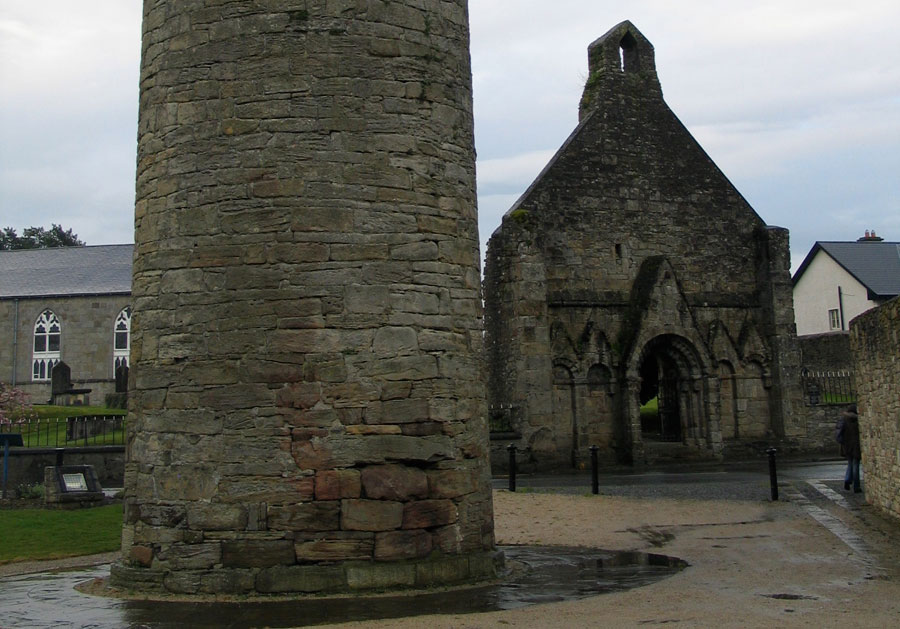Roscrea
The monastery at Roscrea was founded by St Cronan around ....... on the ancient highway, the Slighe Dala that connects Tara to Cashel.
Illuminated capital from page 16v of the Book of Kells, from Bernard Meehan's The Book of Kells. The Roscrea broochA Brief History.
People have lived in the area for thousands of years. Axe heads have been found on Carrick Hill, alongside Roscrea, which date from 3,000 B.C. This place was important to the Celts, one of the many invaders of Ireland. It was on the 'Sli Dhala', one of their 5 major roads across Ireland.
An 'aonach' (ay-nock) or fair was held here. Crea in the name Roscrea is the name of the wife of Dala, an ancient Irish 'Taoiseach' (tee-shock) or chief.
In Christian times St. Cronan founded a small monastery near Corville, close to the present-day school. Later on he moved a mile west, to the site of the present monastic ruins in the middle of the town.
The Vikings raided the town, 942 A.D., during fair time but were put to flight. The Normans came later and built a castle here in 1213. The Butlers were the Norman family involved here. Later on Damer House was built inside the castle walls. The house consists of a gate tower, curtain walls and two corner towers dating from the 13th century. Today Damer house is used as a centre for exhibitions and is open to the public.The Book of Dimma.
In his Acta Sanctorum, Colgan gives a series of miracles which eclipse those recounted of St.Patrick. Amongst others he relates that St. Cronan requested a certain scribe, named Dimrna, to make a transcript of the Four Evangelists, but the copyist was only willing to work nine hours a day. In fact, he seems to have been on strike; but a compromise was effected, and he promised to write until the sun went down. St.Cronan then caused the solar rays to shine continuously for forty days and forty nights ; and neither was the writer fatigued with the continual labour, nor did he feel the want of food, or drink, or sleep, but imagined the forty days and nights were but one day, until he had completed his task. Colgan,with honest simplicity, thought Dimma ought to divide the credit of the miracle with St. Cronan, as both had an equal share in the memorable performance.
The round tower
Gable
The high cross
The other three crosses remain in the churchyard, though only the Cross of Patrick and Columba (right, above) is complete. Another large cross is broken, and only the shaft remains (possibly due to Viking visits?). The third huge cross is very interesting, as it is undecorated and unfinished, but quite massive.
Celtic chickens - a cock and his hens from page 67r from Bernard Meehan's The Book of Kells.

